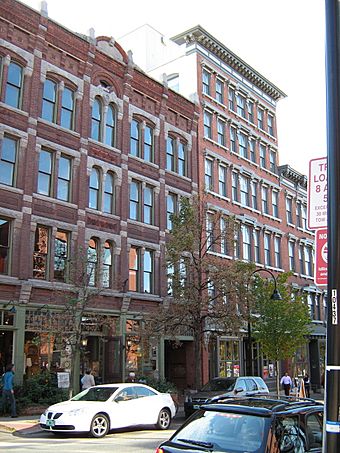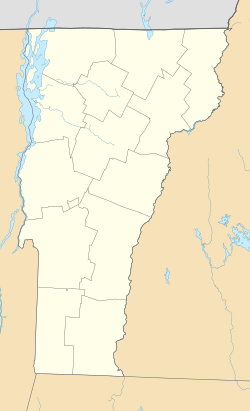Wells-Richardson Complex facts for kids
Quick facts for kids |
|
|
Wells-Richardson Complex
|
|
 |
|
| Location | Main, Pine, College, and St. Paul Sts., Burlington, Vermont |
|---|---|
| Area | 4 acres (1.6 ha) |
| Built | 1820 |
| Architectural style | Early Commercial, Renaissance, Italianate |
| NRHP reference No. | 79000221 |
| Added to NRHP | March 5, 1979 |
The Wells-Richardson Complex is a special group of historic buildings in downtown Burlington, Vermont. These buildings are located near City Hall Park and show how the area grew over almost 100 years. The most important part of the complex was once the factory of the Wells-Richardson Company. This company was very successful in the late 1800s, making and selling old-fashioned medicines. This historic area was added to the National Register of Historic Places in 1979. This means it's an important place worth protecting.
What is the Wells-Richardson Complex?
This group of buildings is found on a city block in Burlington. It is bordered by Main, Pine, College, and St. Paul Streets. This area has always been a good spot for businesses. It was once the end point for a stagecoach route. This route is now part of United States Route 7. The complex is also close to the city's main government area.
Buildings from the Past
The oldest building still standing in the complex was built in the 1820s. It is a brick building on St. Paul Street. It started as a three-story building. Later, it was updated and made bigger in 1870 and 1910. At that time, it was part of the Burlington Steam Laundry. Other buildings across from the park were once hotels. They were built between 1872 and 1910. These buildings show different styles of architecture from that time.
The Wells-Richardson Company Story
Many of the buildings in the complex are linked to the Wells-Richardson Company. This company was led by General William Wells. They became very famous for selling a product called Paine's Celery Compound. This was a type of "patent medicine." These were medicines sold a long time ago that often had secret ingredients. They were not tested like medicines are today. The company sold its products far away, even in places like Sydney, Australia.
The Wells-Richardson Company kept going for 30 years after new laws were made in 1906. These laws made it harder to sell patent medicines. The main factory for the company was a large brick building with four stories. It was in the middle of the block. The company also had offices and showrooms at 125 College Street. As they grew, they used five different buildings in the complex.



